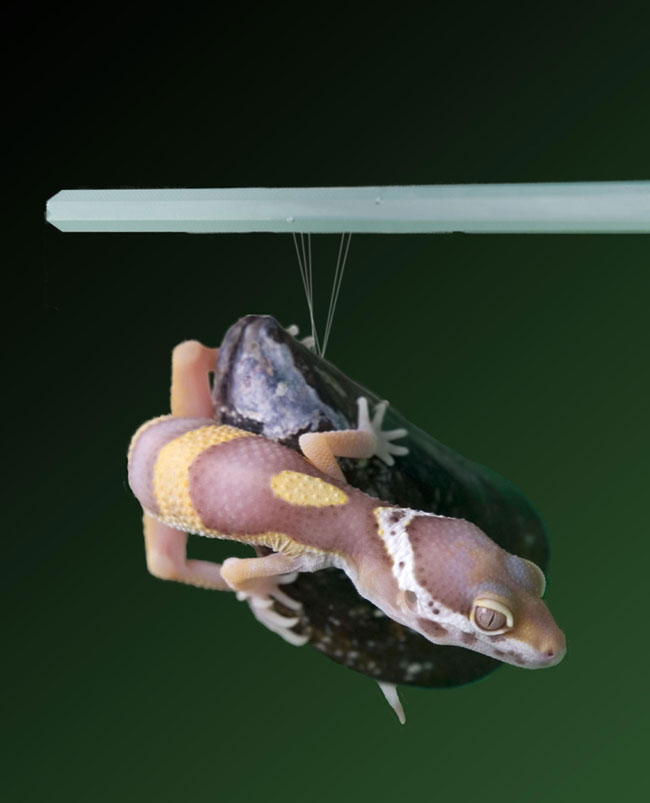Move Over Elmer's: New 'Geckel' Glue Redefines Sticky

Glue like the kind that mussels use to glom onto rocks has been combined with the stickiness seen in gecko feet to form a new adhesive dubbed geckel that could one day bind wounds closed and help robots climb walls underwater.
Geckos are lizards with the remarkable ability to scamper up walls, peeling their feet on and off surfaces repeatedly, like a sticky note. Such wall-crawling is enabled by pads on each foot, densely packed with fine hairs that are split at their ends. The split ends increase the amount of contact gecko feet have with surfaces, making them stick more. Flies and other insects also use this strategy.
Still, when submerged underwater, the stickiness of gecko feet is dramatically reduced. Water and other liquids are generally the enemy of adhesives, as anyone knows who has tried to stick a bandage on a bleeding cut. But Northwestern University materials scientist Phillip Messersmith knew mussels had glue that worked extraordinarily well underwater, keeping them anchored onto rocks even while pounded by huge waves.
Messersmith and his colleagues first imitated gecko foot hairs by fabricating arrays of silicone pillars each roughly 400 billionths of a meter across, or roughly the width of a wavelength of violet light. Next, they coated these flexible pillars with a very thin layer of a synthetic glue that mimics how mussel proteins work.
Underwater, this new geckel performs roughly 15 times as well as a gecko foot would underwater. On dry surfaces, geckel is about three times stickier than a gecko foot above water is.
Although geckel performs better than a gecko foot would underwater, it "is many times lower in adhesion than, say, what a mussel achieves in its native environment," Messersmith said. Still, he noted temporary adhesives often proved quite useful—real geckos could not scurry up walls if they remained permanently stuck onto them, for instance. Indeed, geckel remains sticky even when pulled on and off walls more than 1,000 times, findings detailed in the July 19 issue of the journal Nature.
Messersmith suggested adhesive tapes of geckel could help close wounds without the use of sutures, or find use in water-resistant bandages or drug-delivery patches. "Also, they could be used in unmanned vehicles such as robotics for exploration, rescue and other activities in dry or wet environments where adhesion to surfaces is challenging," he told LiveScience.
Sign up for the Live Science daily newsletter now
Get the world’s most fascinating discoveries delivered straight to your inbox.
Messersmith did caution they only tested how sticky their geckel was over very small areas. "We need to be able to scale up the adhesive fabrication to large areas, and whether our findings will hold over larger areas will have to be demonstrated," he said. "We are starting to work on this already." They also plan on tinkering with pillar shape and artificial mussel glue composition to improve stickiness.
- Quiz: Great Inventions
- The Greatest Modern Minds
- Tape Works Like Gecko Feet











